

PLOS Biology: The €100 lab: A 3D-printable open-source platform for fluorescence microscopy, optogenetics, and accurate temperature control during behaviour of zebrafish, Drosophila, and Caenorhabditis elegans. Abstract Small, genetically tractable species such as larval zebrafish, Drosophila, or Caenorhabditis elegans have become key model organisms in modern neuroscience.
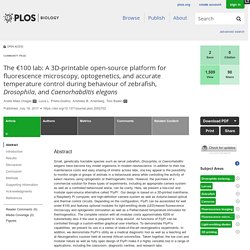
In addition to their low maintenance costs and easy sharing of strains across labs, one key appeal is the possibility to monitor single or groups of animals in a behavioural arena while controlling the activity of select neurons using optogenetic or thermogenetic tools. However, the purchase of a commercial solution for these types of experiments, including an appropriate camera system as well as a controlled behavioural arena, can be costly. «Science frugale» invente l’exposition exploration. Le phénomène est assez rare pour être souligné : Science Frugale, l’exposition participative et évolutive de l’Espace des sciences Pierre-Gilles de Gennes à l’Ecole supérieure de physique et de chimie industrielles de la ville de Paris (ESPCI), s’est enrichie semaine après semaine depuis son ouverture en novembre 2016.
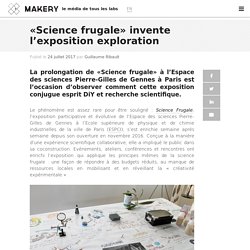
Conçue à la manière d’une expérience scientifique collaborative, elle a impliqué le public dans sa coconstruction. Evénements, ateliers, conférences et rencontres ont enrichi l’exposition qui applique les principes mêmes de la science frugale : une façon de répondre à des budgets réduits, au manque de ressources locales en mobilisant et en réveillant la « créativité expérimentale ». Making lab equipment on the cheap. Laboratory equipment is one of the largest cost factors in neuroscience.
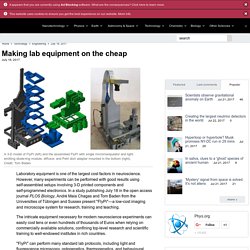
However, many experiments can be performed with good results using self-assembled setups involving 3-D printed components and self-programmed electronics. In a study publishing July 18 in the open access journal PLOS Biology, André Maia Chagas and Tom Baden from the Universities of Tübingen and Sussex present "FlyPi"—a low-cost imaging and microscope system for research, training and teaching. The intricate equipment necessary for modern neuroscience experiments can easily cost tens or even hundreds of thousands of Euros when relying on commercially available solutions, confining top-level research and scientific training to well-endowed institutes in rich countries. How to Set Up Your Own DIY Bio Lab. So you would like to try your hand at some biohacking.
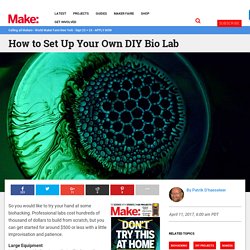
Professional labs cost hundreds of thousand of dollars to build from scratch, but you can get started for around $500 or less with a little improvisation and patience. Large Equipment Let’s start with the pieces that will take up the biggest chunk of space in your lab: refrigerator, freezer, autoclave, and incubator. If you are just planning to run through an educational biotech kit at home, you can probably get away with clearing some space in your kitchen fridge. However, if you are planning to do more than just a weekend project, then invest in a dedicated fridge and freezer for your experiments. Photo courtesy of the US Department of Agriculture.
RECHERCHE FRUGALE. EDUCATION FRUGALE. FABLAB & MAKERS. ASSOCIATIONS. UNIVERSITÉ- GRANDES ÉCOLES. INSTITUTIONS. Star Wars Imperial March with Floppy and Arduino. #Science Frugale - Pinterest ESPGG. Drawn Yourself: Drawing Watercolor Portrait on Real Paper. Scotch Tape Lets You See Through Frosted Glass. There’s probably no better tool in the gadgeteer’s box than a roll of Gaffer Tape (or duct tape, if you don’t mind sticky or crumbly residues).

But what about its humble household cousin, Scotch Tape? Traditionally used for wrapping gifts or taping broken spectacles back together, it has another amazing talent. It can let you see through solid objects. If those solid objects are in fact sheets of frosted glass. If you have a frosted window that you need to take a peek through, tear off a strip of tape and press it down firmly onto the pane. I’m amazed we never saw this trick in a MacGyver episode. Weird Tape Effect [YouTube via Core77] See Also: Go Back to Top. #LOWCOST - #COOPI - BOOK - WNDW - Wireless Network in Developing World. #LOWCOST - TP Physique Low Cost - Julien Bobroff - #OPENSOURCE - OPENSCIENCE - Article - Science for All: How to Make Free, Open Source Laboratory Hardware. In the not-so-distant future you will read of a scientific breakthrough in an area your daughter was excited about in school.
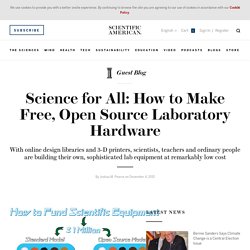
In the journal article you will click on the supplementary materials and be able to download all of the source code needed to replicate the instruments used to do the experiment. You will fire up your home 3-D printer to fabricate the equipment. Then, with a few more clicks, you will order any specialty supplies. By the weekend all the supplies will have arrived and now you and your daughter will have the fun of assembling the experiment and participating in state-of-the-art research for almost no money on a quiet Saturday afternoon. This exciting future of science is closer than you might think. The most powerful FOSH also include CAD (computer aided design) files that allow you to digitally replicate parts, or in some cases the entire device. If you are a working scientist, it is in your best interest to share the designs for your hardware.
Joshua M. Programme REPERE. Comment (ne pas) innover avec une noix de coco (2/2) Marc Dusseiller (plus connu sur le réseau comme dusjagr) est un pionnier du biohacking.

Open-source Lab. Open-Source Lab, 1st Edition: How to Build Your Own Hardware and Reduce Research Costs[edit] Free content[edit] FREE access to select content from Open-Source Lab: How to Build Your Own Hardware and Reduce Research Costs.
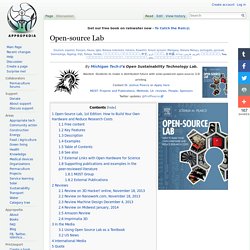
This guide details the development of the free and open-source hardware revolution and provides you with step-by-step instructions on building your own laboratory hardware. In the first two chapters displayed here, the author defines the basic terms of open-source software and discusses the rise of the open-source hardware revolution and how it impacts science before exploring five pragmatic advantages to joining the open-source scientific community for both your research in general, and most importantly, your equipment and instrumentation. Key Features[edit] Description[edit] Le "jugaad", secret de la réussite de l'Inde. Le "jugaad" devrait être le mot d’ordre de 2012.
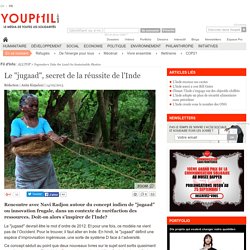
Et pour une fois, ce modèle ne vient pas de l’Occident. Pour le trouver, il faut aller en Inde. Open Source Biological Art – We Make Money Not Art. KresseKunst Ever wondered how to turn a simple webcam into a microscope, safely cultivate GFP bacteria, hack DVD burners to make your own nano and bio experiments, or how to use other cheap, easy to come by material in order to build an hydrometer (instrument to measure the relative density of a liquid), an incubator or even a bat detector?
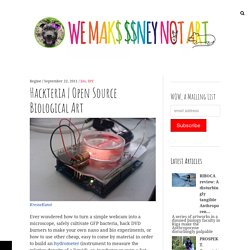
Then you should check out the DIY pages on Hackteria‘s wiki or enroll into one of their workshops. Hackteria is a collection of Open Source Biological Art Projects started in 2009 by Andy Gracie, Marc Dusseiller and Yashas Shetty. They have since been joined by Anthony Hall, Urs Gaudenz, and a growing community of people keen on making experiments and developing their own projects in the field of biological art and science.
The wiki is an online resource for scientists, garage scientists, hackers and artists alike. Ingénieurs sans frontières. Echanges et réseaux. EHESS - Centre de recherche médecine, sciences, santé, santé mentale, société. Lab School Network. Le Lab School Network (LSN) est un réseau d’acteurs d’horizons différents, de citoyens impliqués dans le renouveau éducatif. Créé en novembre 2015, à l’initiative de Pascale Haag (EHESS), il comprend des chercheurs, des pédagogues, des représentants des pouvoirs publics, des associations, des institutions et des entreprises. Il se donne notamment pour objectif de recenser et de rendre plus visibles les différentes initiatives dans le domaine de l’expérimentation pédagogique, tout en accompagnant leur évaluation, de développer des outils et de faciliter la mise en relation des différents acteurs.
Rethinking innovation together.